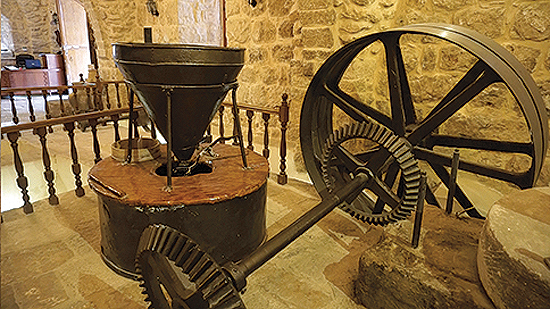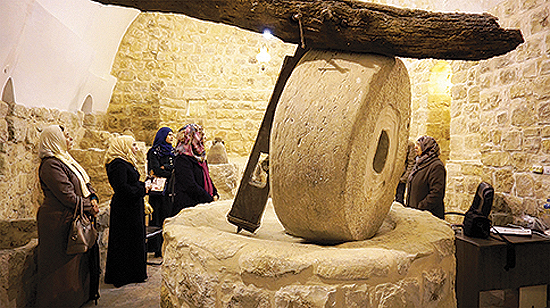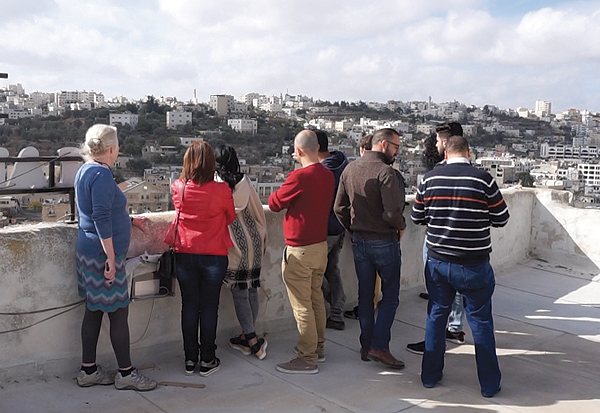Courtesy of VisitPalestine.ps
Hebron (Al-Khalil) is one of the oldest continuously inhabited cities in the world. Excavations in the area of Tell Rumeida, which is the archaeological site that borders Hebron’s old quarters from the eastern side, reveal structures that date to 2000 BC.
As home to the imposing Haram al-Ibrahimi (Sanctuary of Abraham) or Tomb of the Patriarchs – the resting place of the great patriarchs or prophets Jacob, Isaac, and Abraham (Ibrahim), and their wives Leah, Rebecca, and Sarah – Hebron is sacred to the three monotheistic faiths. According to Islamic belief, Joseph, son of Jacob and Rachel, was also buried beneath the sanctuary.
In Arabic, the place is called Al-Khalil, which is a term that derives from the Qur’anic epithet for Abraham – Khalil al-Rahman, meaning “Beloved of the Merciful” or “Friend of God.” The name Hebron, when traced back to its Semitic roots, means the same.
Al-Khalil lies on the ancient trade and pilgrimage route to Mecca that connects Damascus and Cairo. It has always been a meeting place for pilgrims, traders, and travellers from around the world.
The very compact structure of the old quarters expanded organically around the Haram al-Ibrahimi. However, the town’s development progressed more prominently to the west, south, and north, keeping the sacred site on its eastern edge. All the inner streets of the old city have been planned to provide easy access to the mosque.

A stroll through the old city’s narrow, winding streets can offer a fascinating journey through different eras of history. The old quarters, dominated by the Mamluk style (twelfth century), with additional elements from the Ottoman times (fifteenth to nineteenth centuries), were constructed using the hoash model, where extended family members would build their houses around a common courtyard. The city did not have fortifications but was relatively protected by the continuous wall of closely-knit houses at its outer edges.
Hebron’s market (souq) with its maze of alleys is definitely worth exploring. The shops and stalls sell everything from locally made pottery, glass, rugs, and embroidered items to fresh and dried fruits. Typical Middle Eastern sweets, such as lokum, delicate chewy cubes dusted with icing sugar, or katayef, sweet little pancakes filled with cream or nuts, can also be found there.
Two other interesting sites located in the heart of the old city are Al-Natsheh and Abd al-Nabi olive presses and Qunaibi Press, the sesame press of the town. All of them were established during the Ottoman Era in Palestine, but the Abd al-Nabi Olive Press was developed into a mechanical press and flour mill during the British Mandate.

Tip: The rooftop of the beautifully restored Lamar Guesthouse offers a comprehensive view of the town and can be a perfect place to start or end your visit. The guesthouse is located in the northeast part of Hebron’s old city and is marked on the newest maps produced by the Palestinian Ministry of Tourism and Antiquities.
To learn more about Hebron and other interesting destinations, visit our website at www.visitpalestine.ps, or contact the Visit Palestine Information Center in Bethlehem via info@visitpalestine.ps or (02) 277-1992.
Despite the fact that Hebron’s old city and its inhabitants have been subjected to constant suffering caused by the occupation, the area has recently started to revive. Many buildings, characterized by vaulted ceilings and arched doors and windows, were renovated and restored by the Hebron Rehabilitation Committee and the Palestinian Ministry of Tourism and Antiquities, and can now serve again as a space for various Palestinian institutions and small businesses.
In order to gain better insight into the complex situation of Hebron’s Old City, visit www.tiph.org – the website of Temporary International Presence in Hebron, a civilian mission observer.


